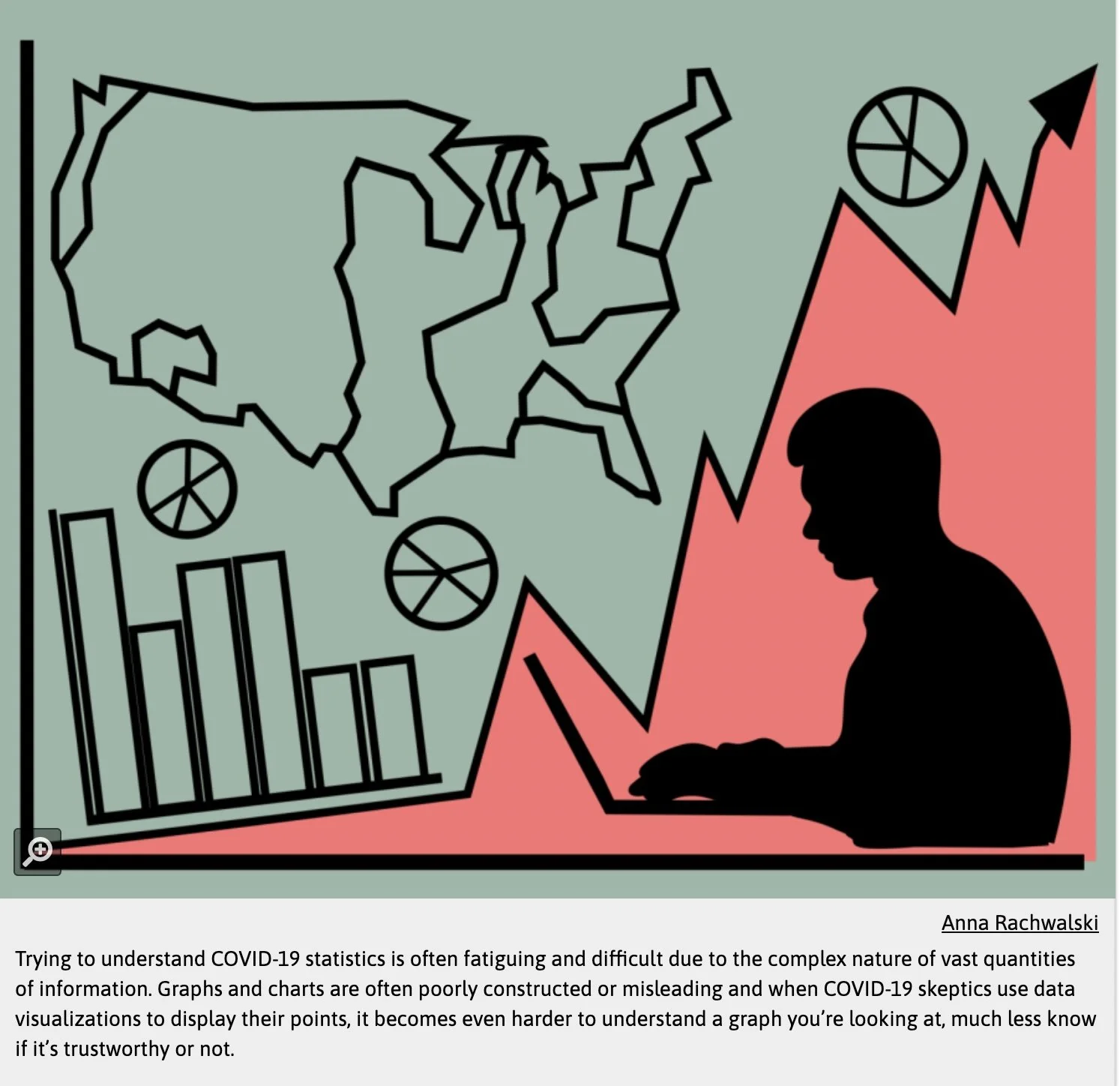Student Ambassador Showcase: Anna Rachwalski
/Each month, we will feature work from our GSPA Student Ambassadors.
Anna Rachwalski is a senior at Midtown High School where she serves as co-editor-in-chief for The Southerner. Read one of her pieces below about how COVID-19 necessitates data literacy . The article is reprinted with permission.
Living with COVID-19 necessitates data literacy
Anna Rachwalski
March 17, 2022
The COVID-19 pandemic made it a necessity for regular citizens to stay updated on rapidly changing guidelines. Mask mandates were put in place and lifted and put in place again, vaccines were approved for age groups in various stages and positive cases rose and fell. These ever-changing circumstances made people have to stay updated to ensure they were taking proper precautions for themselves and their families.
Keeping track of cases and trying to understand COVID-19 statistics is often fatiguing and difficult due to the complex nature of the vast quantities of information. Graphs and charts are often poorly constructed or misleading, and when COVID-19 skeptics use data visualizations to display their points, it becomes even harder to understand and verify the trustworthiness of a graph.
But in order to move into the next stage of the pandemic, we need to stay focused on reading and understanding the numbers. Just because COVID-19 pushed a mountain of statistics, articles and misinformation onto our social media feeds doesn’t mean we can disregard it now that normalcy begins to return. COVID-19 isn’t going away, and as the pandemic becomes increasingly weaved into our normal lives and routines, being updated on COVID-19 is incredibly important.
The problem is, no one truly understands the risk. A New York Times survey of 4,441 Americans found that people ages 18-34 are more worried about getting sick from COVID-19 than people ages 65 and older, despite the fact that older adults are more likely to get severely sick. Those who have gotten their booster shot are more worried about getting sick from COVID-19 than the unvaccinated, despite the fact that a booster results in a much lower infection rate.
Part of what’s causing this widespread cognitive dissonance is how COVID-19 was politicized during the early stages of the pandemic. Former President Donald Trump admitted to downplaying the true risk of the pandemic and his minimizing comments shaped the conservative message on COVID-19. As a result, partisanship has become a reliable predictor of vaccination status, more so than race, education or insurance status.
This means that COVID-19 risk valuation varies by political party and neither party is getting it right — Democrats overestimate risk, while Republicans underestimate it. With all of this partisan blur, combined with confusing policy, it’s become harder to live day-to-day and evaluate the risk of normalcy.
To deal with the “new normal” and strike a reasonable balance between caution and pre-pandemic activities, understanding science is the key. So what can an individual do to try to see COVID-19 accurately?
Understand data. A researcher at the London School of Economics found that more statistically literate people adjust their COVID-19 risk estimates more accurately to what the true risk is. It’s not reasonable to expect that every news consumer has taken AP Statistics, but to be a better consumer, it’s a good idea to slow down and at least read charts’ titles and axes.
However, moving forward isn’t the responsibility of those just consuming news. Data scientists and journalists need to adjust as well. COVID-19 information doesn’t come to the majority of Americans from traditional print news sources, but rather from social media and digital sites. Americans, as a whole, need to learn scientific and data literacy. But journalists also need to adapt to their audience and new news sources to make it easier for everyone to evaluate COVID-19 risk accurately and exist in this “new normal”.
This story originally appeared on The Southerner, the website for The Southerner at Midtown High School.


